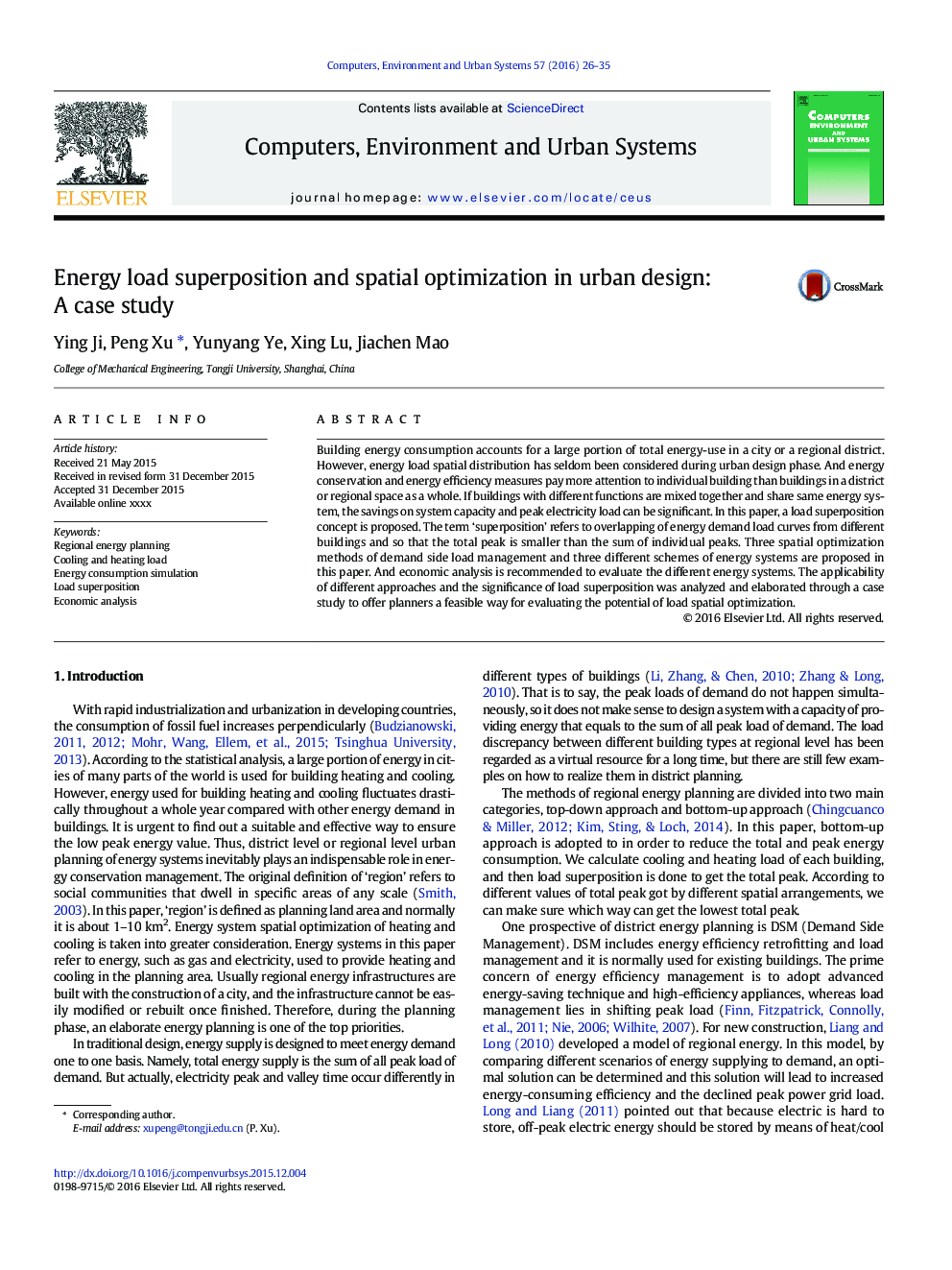| Article ID | Journal | Published Year | Pages | File Type |
|---|---|---|---|---|
| 6921897 | Computers, Environment and Urban Systems | 2016 | 10 Pages |
Abstract
Building energy consumption accounts for a large portion of total energy-use in a city or a regional district. However, energy load spatial distribution has seldom been considered during urban design phase. And energy conservation and energy efficiency measures pay more attention to individual building than buildings in a district or regional space as a whole. If buildings with different functions are mixed together and share same energy system, the savings on system capacity and peak electricity load can be significant. In this paper, a load superposition concept is proposed. The term 'superposition' refers to overlapping of energy demand load curves from different buildings and so that the total peak is smaller than the sum of individual peaks. Three spatial optimization methods of demand side load management and three different schemes of energy systems are proposed in this paper. And economic analysis is recommended to evaluate the different energy systems. The applicability of different approaches and the significance of load superposition was analyzed and elaborated through a case study to offer planners a feasible way for evaluating the potential of load spatial optimization.
Related Topics
Physical Sciences and Engineering
Computer Science
Computer Science Applications
Authors
Ying Ji, Peng Xu, Yunyang Ye, Xing Lu, Jiachen Mao,
